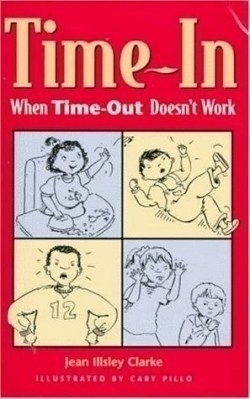Time-In
When Time-Out Doesn't Work
By the time their first child turns three or four, most parents have recognized the limitations of the popular “time-out” discipline technique, which involves isolating a child for a few minutes to interrupt negative behavior. Although “time-out” is effective in many situations, parents and teachers will welcome the additional tools offered by parent educator and consultant Jean Illsley Clarke.
The author of Self-Esteem: A Family Affair, Clarke suggests that parents, teachers and child-care providers use “time-in” to build connection and trust with their children. She provides four tools—Ask, Act, Attend, and Amend—that adults may use in any combination at their discretion, depending on the nature of the discipline problem. Parents may choose to ask the child a question, such as “Where do our coats belong?” when a child leaves a coat on the floor instead of hanging it in the closet, to invite the child to listen and to think on his own.
Parents also may use a question to present children with two or three acceptable options from which they may choose. Clarke says providing children with options, all of which are agreeable to the parent, can reduce hassles. She cautions parents to keep criticism out of the question and to avoid posing questions that sound like a trap. Sometimes a situation may require adults to act to prevent an accident (removing knives from toddler’s hands) or to get a child’s attention (putting the child’s plate in the refrigerator until the child complies with family dinner table standards). Occasionally a child may need to make amends for misbehavior, by repairing or replacing a sibling’s broken toy, for example. Finally, the attend tool, which means to pay full attention to the situation, connects the other three. “Only by Attending will you choose the appropriate puzzle piece: Ask the helpful question, take the right Action, or notice the misbehavior that needs to be Amended,” Clarke writes.
Clarke provides many helpful, real-life examples of how each tool can best be used, singly or in various combinations. She writes clearly and confidently and with the voice of practical experience. Clarke’s “time-in” method seems so easy and common-sensible that many parents may be eager for their children to misbehave just to get a chance to try it out.
Reviewed by
Sharon Flesher
Disclosure: This article is not an endorsement, but a review. The publisher of this book provided free copies of the book to have their book reviewed by a professional reviewer. No fee was paid by the publisher for this review. Foreword Reviews only recommends books that we love. Foreword Magazine, Inc. is disclosing this in accordance with the Federal Trade Commission’s 16 CFR, Part 255.

